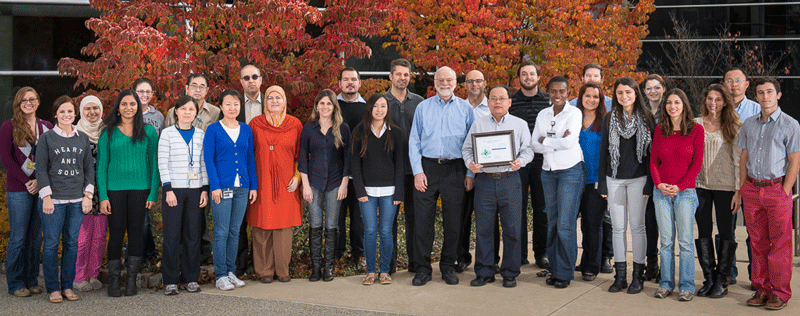
The Wicha laboratory is a leader in Cancer Stem Cell (CSC) biology. According to the ISI Citation Index, Dr. Wicha is among the most highly-cited investigators in the field of CSCs. His group was part of the team that first identified breast CSCs. Dr. Wicha’s laboratory identified a number of stem cell markers and developed in vitro and in vivo models to isolate and characterize these cells. These research models and resources have been widely adopted by other investigators. His laboratory subsequently elucidated a number of intrinsic and extrinsic pathways which regulate self-renewal and cell fate decisions in CSCs. Recently, the Wicha laboratory has focused on translating his pre-clinical research findings into the development of clinical trials designed to target breast CSCs.
Our research mission is the conquest of cancer through innovation and collaboration. We seek to accomplish this by creating a stimulating, collaborative research environment where M.D.’s and Ph.D.’s, medical and post-doctoral research fellows and clinicians, graduate students and undergraduates alike can come together to conceive, inspire and drive scientific innovation. Through our integrated, multi-disciplinary approach we will establish the University of Michigan as the international leader in cancer stem cell research and resulting targeted therapies.
More information about the history of the Wicha Lab is available here.
Congratulations to Dr. Conley, Dr. Wicha and co-authors Trenton Baker, Joe Burnett, Becca Theisen, D Lazarus, C Peters, Shawn Clouthier and Scott Eliasof on their latest paper entitled "CRLX101, an investigational camptothecin-containing nanoparticle-drug conjugate, targets cancer stem cells and impedes resistance to antiangiogenic therapy in mouse models of breast cancer" which was recently published in Breast Cancer Research Treatment. In this paper the authors tested whether inhibiting hypoxia-inducible factor 1a (HIF-1a) can reverse the stimulatory effects of antiangiogenic-induced hypoxia on breast CSCs. In a preclinical model of breast cancer, treatment with bevacizumab was compared to the combination treatment of bevacizumab with CRLX101 and to CRLX101 monotherapy. While exposure to hypoxia increased the number of breast CSCs, treatment with CPT blocked this effect. Concurrent administration of CRLX101 impeded the induction of both HIF-1a and CSCs in breast tumors induced by bevacizumab treatment. The results from these studies support the combined administration of dual TOPO-1- and HIF-1a-targeted agents like CRLX101 with antiangiogenic agents to increase the efficacy of these treatments.